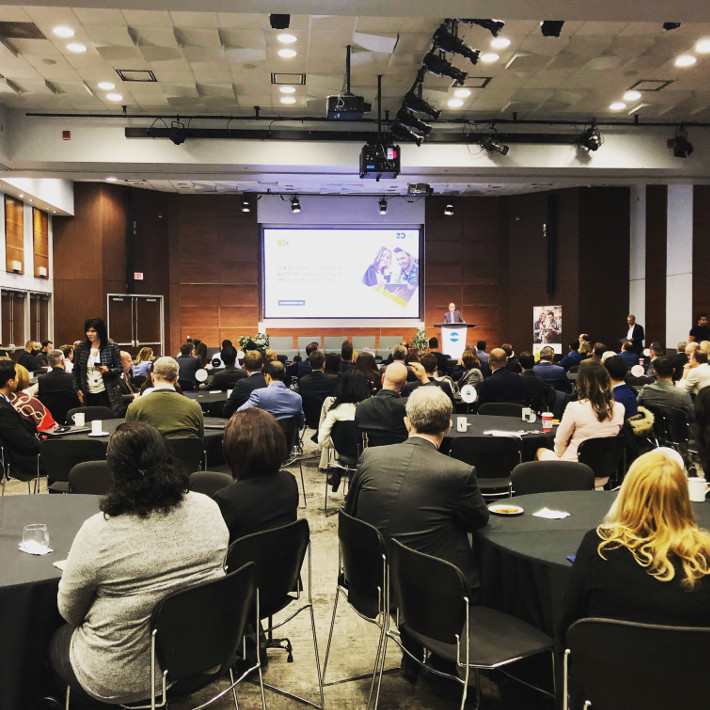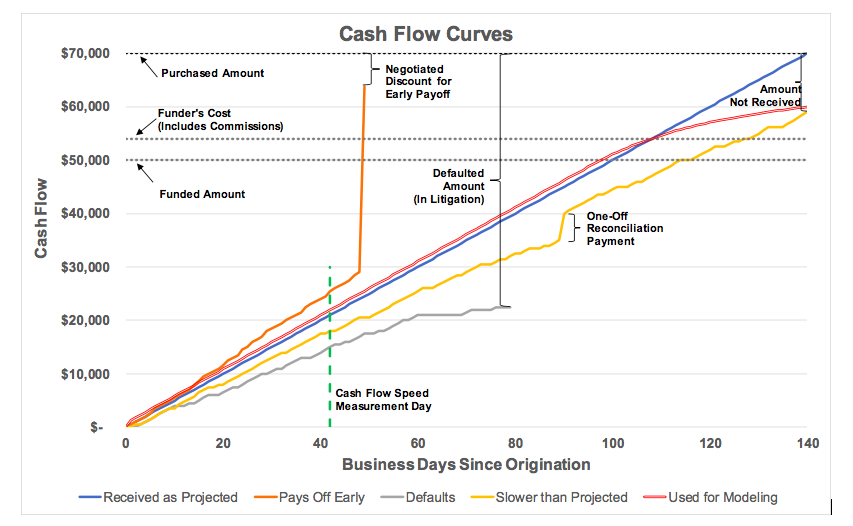Archive for 2019
Broker Fair / Black Friday ONE-DAY ONLY Special Price
November 28, 2019Broker Fair Returns to New York City on May 18, 2020. Take advantage of this special ONE-DAY only discount code and get 29% OFF THE EARLY BIRD PRICE. This incredible deal ends at 11:59pm EST on 11/29/19.
Broker Fair’s two previous annual events sold out in advance. Hundreds of brokers from the commercial financing, merchant cash advance, and small business lending industries will be in attendance this year. See you at Broker Fair!

Happy Thanksgiving. It’s Meme Time!
November 27, 2019Happy Thanksgiving. You know what that means! deBanked original memes! Here’s the latest:






SEE ALL THE MEMES FROM PREVIOUS YEARS!
2017 1: The State of The Industry (In Memes)
2017 2: Take a Break From Funding This Thanksgiving
2016: The History of Alternative Finance (As Told Through Memes)
2013: 10 Clues You’re Hardcore About Merchant Cash Advance
SEE ALL OF OUR PREVIOUS THANKSGIVING POSTS!
2018
2017
2016
2012
Flender Makes BIG Mark in Ireland’s SME Lending Market
November 26, 2019 Ireland can seem like a small place, so much so that on my way to meeting with Colin Canny, Flender’s Head of Partnerships, I quite literally bumped into Flender’s co-founder & CEO Kristjan Koik who was walking through Dublin’s Silicon Docks. I recognized Koik from the who’s who catalogue of executives I had compiled before traveling abroad to explore the Irish fintech scene. He was cordial and polite. And yet through his demeanor I sensed there was more, that there was a story to be told even if it was not ready to be shared.
Ireland can seem like a small place, so much so that on my way to meeting with Colin Canny, Flender’s Head of Partnerships, I quite literally bumped into Flender’s co-founder & CEO Kristjan Koik who was walking through Dublin’s Silicon Docks. I recognized Koik from the who’s who catalogue of executives I had compiled before traveling abroad to explore the Irish fintech scene. He was cordial and polite. And yet through his demeanor I sensed there was more, that there was a story to be told even if it was not ready to be shared.
The following month Flender would reveal remarkable news, a new €75 million funding line, bringing their total to €109 million raised since the company’s founding in 2015. The company is backed by Eiffel Investment Group, Enterprise Ireland, entrepreneur Mark Roden and former Ireland rugby player Jamie Heaslip.
This large amount of funding, even by UK or US standards, makes Flender stand out, and so when I finally meet with Canny on that warm Fall day in September, I’m pretty thankful he afforded me the time.
Flender, Canny explains, is derived from Flexible Lender. The pamphlet he produces and hands to me says that their idea is simple, to provide businesses with the funding they need and ensure the application process is fast, easy, and transparent.
Application details for products like term loans and merchant cash advances require the usual stips like historical bank statements, a profit & loss statement, and a balance sheet. But there’s also a section quintessentially Irish, that is that it can be beneficial to submit your last 2 years herd numbers if you’re a farmer, complete with your last 12 months Milk Reports and property acreage figure.
 Canny explains that Flender is not a high-risk fall-back lender, but rather the opposite. “Our credit process is extremely tight,” he says, “in line with banks.” And with good rationale, seeing that the company is still somewhat reliant on a peer-to-peer funding model. More than half of individual peers on the platform are Irish but Canny says that it’s not unusual for non-residents including Americans to lend on the platform as well.
Canny explains that Flender is not a high-risk fall-back lender, but rather the opposite. “Our credit process is extremely tight,” he says, “in line with banks.” And with good rationale, seeing that the company is still somewhat reliant on a peer-to-peer funding model. More than half of individual peers on the platform are Irish but Canny says that it’s not unusual for non-residents including Americans to lend on the platform as well.
Canny says the Irish market is very “community based.” The transparency of the marketplace aligns with that characterization. Like other peer-to-peer small business lenders in Ireland, borrower identity is publicly accessible on the platform, as are the terms of the loan. Anyone can view the business name of a prospective borrower on the website, the address, a bio, and even their “story.”
Flender taps several marketing channels like Google Adwords, radio, direct sales, and even brokers. Canny says they generate an underwriting decision in as quick as 4-6 hours and fund a business in as little as 24 hours. Borrowers like the product so much that many renew. Seventy percent of the SMEs in the country are peer-to-peer bankable, Canny explains, creating a wide playing field to target.
Meawnwhile, CEO Kristjan Koik told the Irish Times that the top 3 banks in Ireland have 92 percent of the SME lending marketshare so there is still a ton of opportunity for non-banks like Flender to grab hold of.
As for how the massive credit line impacts them going forward? Koik told the Times that they would be cutting interest rates by up to 1 percent across their various loan products. Interest rates now start as low as 6.45% and terms range up to 36 months.
As Canny and I part ways I present one final question, will Flender be expanding abroad? I get no definitive answer. He was cordial and polite, and yet I sensed through his demeanor that there was more, perhaps even a story in the works that was not yet ready to be shared.
Bloomberg is Officially Running for President
November 25, 2019 Former NYC Mayor Michael Bloomberg is officially running for President. He announced it over the weekend.
Former NYC Mayor Michael Bloomberg is officially running for President. He announced it over the weekend.
His campaign’s website paints him as a self-made entrepreneur who at 39-years old founded a company in a one-room office with the idea of turning a computer that connects users to a vast network of information and data. Today, Bloomberg LP employs more than 20,000 people and Bloomberg the individual is the 9th richest person on Earth (Forbes).
 His campaign’s website is light on the name Bloomberg and heavy on the name “Mike,” perhaps to cast him as the friendly hegemon next door. One page on his website refers to him as Mike 128 times while the word Bloomberg appears only 12 times and almost entirely in connection with things his businesses have done. Even his logo leads with a soft all-lowercase mike atop BLOOMBERG2020.
His campaign’s website is light on the name Bloomberg and heavy on the name “Mike,” perhaps to cast him as the friendly hegemon next door. One page on his website refers to him as Mike 128 times while the word Bloomberg appears only 12 times and almost entirely in connection with things his businesses have done. Even his logo leads with a soft all-lowercase mike atop BLOOMBERG2020.
Baby apparel for sale on his website goes even further to understate his power by simply stating m 2020.

Democratic voters will now have to choose between frontrunners Joe Biden, Elizabeth Warren, Bernie Sanders, and this other dude named mike.
Sanders was quick to voice his displeasure with the new competition:
We do not believe that billionaires have the right to buy elections.
That is why multi-billionaires like Michael Bloomberg are not going to get very far in this election. pic.twitter.com/738Eg5ssLe
— Bernie Sanders (@BernieSanders) November 24, 2019
Canadian Lenders Summit Recap
November 23, 2019 The Canadian Lenders Association’s largest annual event brought together hundreds of executives from the fintech and lending industries. It was hosted at MaRS, a dedicated launchpad for startups in Downtown Toronto that occupies more than 1.5 million square feet and is home to more than 120 tenants, many of which are global tech companies.
The Canadian Lenders Association’s largest annual event brought together hundreds of executives from the fintech and lending industries. It was hosted at MaRS, a dedicated launchpad for startups in Downtown Toronto that occupies more than 1.5 million square feet and is home to more than 120 tenants, many of which are global tech companies.
After OnDeck Canada CEO Neil Wechsler was introduced as the new chairman of the association, the day kicked off with a presentation by Craig Alexander, the Chief Economist of Deloitte Canada. Alexander explained that after some major warning signs sounded off late last year and early this year, Canadian growth and positive economic indicators have returned. He opined that politics in Canada and the United States will play a strong role in the economic outcomes of both countries going forward.
Panels on a variety of topics dominated the rest of the day with an interlude keynote from author Alex Tapscott who spoke about the financial services revolution.
The sessions concluded with an award ceremony focused around the Top 25 Company Leaders in Lending and the Top 25 Executive Leaders in Lending. The Canadian Lenders Association will make videos of the sessions available online. deBanked was in attendance.

Merchant Cash Advance Valuation Dynamics
November 20, 2019Understanding the differences in cashflow dynamics between small business loans and MCAs is crucial for investors when valuing these alternative investments. A small business loan usually has familiar terms such as a principal amount that is paid back with interest over time, typically with a monthly payment schedule. An MCA agreement does not have these terms. Instead, the merchant agrees to sell a certain percentage of future revenues generated by the business, up to a specified “Purchased Amount,” to the funder in exchange for a lump sum of cash (the “Funded Amount”). MCAs often have an initially agreed-upon dollar amount that is debited daily by the funder via ACH. However, merchants have the ability to reconcile the total debited at the end of each month based on their actual sales activity and the agreed-upon percentage. If the merchant’s sales are slower than projected, the MCA company owes the merchant back a portion of the month’s debits to be in line with the contractual percentage of sales, and the daily ACH amount may be adjusted.
The preferred approach for valuing MCAs is discounted cashflow analysis. Given the nuances of MCA cash flow dynamics, modeling should be done individually for each MCA. Projections should be modeled using assumptions that are supportable from historical data and the methodologies used should be transparent. This modeling should incorporate not only the cash flow from the merchant, but also the cash flows arising from deal mechanics such as commissions paid, origination fees and ongoing fees as well as expected charge-offs. Since the funder cannot know for certain which merchants will realize revenues higher or lower than projected or default when underwriting the MCA, any attempt at an accurate projection of future cash flows must incorporate probabilities for scenarios where the timing and amount of cash flows is different than the underwritten scenario. Because businesses in a particular sector may have similar historical cash flow behavior, each MCA should be analyzed based on the historical experience of MCAs with similar characteristics such as business type, advance amount and purpose for taking out the MCA. A smaller but related issue is incorporating the probability that the merchant chooses to pay off the Purchased Amount via a lump sum payment and negotiates a discount to the Purchased Amount.
Examining payment behavior involves creating payment curves that compare the cash flow received at each point in time, expressed as a percentage of the Purchased Amount, to the cash flow projected to have been received at that time during underwriting. This curve is the “Cash Flow Curve,” and its steepness is the “Cash Flow Speed.” More specifically, the Cash Flow Speed is the cash flow received to date divided by the cash flow projected to be received as of that date during underwriting. A perfectly underwritten MCA would be one on which no reconciliations are made and each daily ACH goes through without issues, meaning that all of the Purchased Amount was received exactly as originally projected, and its Cash Flow Speed would be 100.0% every day. As with most things, this does not work in practice like it does in theory. Some merchants will have ACHs which fail, make additional payments to make up for failed ACHs, renegotiate the daily ACH amount as part of a reconciliation or after a failed ACH, turn off ACH completely or have other issues. Analyzing the Cash Flow Curve for each MCA and comparing it to its cohort is essential to understanding performance drivers when projecting future cash flows.
To illustrate a possible MCA agreement, assume a merchant sells $70,000 of future sales (the Purchased Amount) to the funder for $50,000 (the Funded Amount). The Purchased Amount is to be received via ACH daily, with $500 debited per day for the next 140 business days based on projected revenues. In this example, the Gross Factor is 1.40, i.e. $70,000 divided by $50,000. Assuming that the funder pays a commission of 8% of the Funded Amount, the Funder’s Cost is $54,000, and the Net Factor is 1.30, i.e. $70,000 divided by $54,000. The graph below illustrates some possibilities of what the actual Cash Flow Curves might be.

Received as Projected: depicts an MCA where debits via ACH are received each day, and the ACH is unchanged until the full Purchased Amount is received. Its Cash Flow Speed at the measurement day (and every day) is 100.0%.
Pays Off Early: depicts an MCA where the merchant elects to send additional cash flow to the funder, eventually negotiating to pay off the MCA early after 49 business days with a discount to the Purchased Amount negotiated with the funder. Its Cash Flow Speed at the measurement day is 121.4%.
Defaults: depicts and MCA where the ACH debit fails with increasing frequency until the bank account is closed and the funder takes the merchant into litigation for the remaining Purchased Amount (the “Defaulted Amount”). Note that the funder may be entitled to recoup amounts beyond the Defaulted Amount in litigation. Its Cash Flow Speed at the measurement day is 71.4%.
Slower than Projected: depicts an MCA where ACH fails sometimes, but the merchant does not shut down and the funder receives cash flow slower than projected. An example of a one-off reconciliation payment is included, assuming the merchant had not been paying in accordance with the contract and agreed to make a “catch-up” payment. After 140 days only $59,000, or 84.3% of the $70,000 Purchased Amount, has been received, although the funder would likely still expect to recoup most or all of the remaining Purchased Amount. Its Cash Flow Speed at the measurement day is 85.7%.
Used for Modeling: When analyzing this MCA on day 0, before any cash flow behavior is known, each of these possibilities (as well as others) would be incorporated into the analysis on a probability-weighted basis. An example of a probability-weighted average Cash Flow Curve is shown. After 140 days 85.7% of the Purchased Amount has been received, although cash flow is assumed to continue to be received until 210 days (150% of the underwritten projection), with 90.3% of the Purchased Amount received by then. Its Cash Flow Speed at the measurement day is 104.6%.
Based on the Funder’s Cost, the chart below shows some return metrics based on these Cash Flow Curves.

As the industry matures and attracts more capital from institutional investors, it is increasingly important to have clearly defined metrics in place to evaluate underwriting effectiveness, assess relative credit performance of originators or cohorts of MCAs, and to perform valuations. Standardizing on terms such as Funded Amount, Purchased Amount, Gross Factor, and Net Factor and concepts such as Cash Flow Curve and Cash Flow Speed should ease the understanding of MCAs by eliminating ambiguity amongst various participants in the industry.
OCC Believes It’s Time To Fix Madden Issue Once And For All
November 18, 2019 If a bank makes a legal loan to a consumer and then later sells the debt to a third party, the terms of the loan are still legal right?
If a bank makes a legal loan to a consumer and then later sells the debt to a third party, the terms of the loan are still legal right?
“Yes” should be the obvious answer, but in 2015 a federal appeals court said “no.” The case was Madden v. Midland Funding LLC, which started as a credit card debt owed by a consumer to Bank of America at 27% interest and ended as an allegedly illegal loan once the debt was sold to Midland Funding.
The ruling, which deBanked has covered extensively, shook the consumer and business loan markets in New York, Connecticut, and Vermont with its jurisdictional reach. Midland Funding appealed the ruling to the United States Supreme Court but the Court declined to hear the case.
Congress attempted to bring clarity to the lawfulness of the practice with a bill called the Protecting Consumers’ Access to Credit Act of 2017 but failed when the approved House bill never even came up for a vote in the Senate.
On Monday, the Office of the Comptroller of the Currency (OCC) proposed a rule to clarify the “Valid When Made” Doctrine that had been pierced in Madden. “This proposal will address confusion about the effect of a transfer on a loan’s valid interest rate, including confusion resulting from a recent decision from the U.S. Court of Appeals for the Second Circuit (Madden v. Midland Funding, LLC),” OCC wrote in a statement.
A 60-day public comment period will be open once the proposal is published in the Federal Register. To find out how to comment on the rule, click here.
Merchant Infamous For Safari-Themed Home, Has Died
November 18, 2019 The saga of Michael Willhoit has come to an end. deBanked wrote about Willhoit in December 2018 when we learned he defaulted on nearly half a million dollars in merchant cash advance transactions and was sued by banks over $4.5 million in bad loan deals. This past June he was also indicted on 36 counts of bank fraud.
The saga of Michael Willhoit has come to an end. deBanked wrote about Willhoit in December 2018 when we learned he defaulted on nearly half a million dollars in merchant cash advance transactions and was sued by banks over $4.5 million in bad loan deals. This past June he was also indicted on 36 counts of bank fraud.
But on Sunday, Willhoit passed away of natural causes, the Springfield News-Leader reported. He was 66.
Willhoit’s local notoriety gained somewhat national interest thanks to his fully-customized multimillion dollar safari-themed home, dubbed “The African Queen.” Willhoit told a News-Leader reporter in 2016 that he spent $3 million renovating the Sprinfield, MO property including $400,000 for a 900-square-foot wood floor and $300,000 for landscaping. Other notable items on the property included:
- Two roaring lion masks
- Two 7-foot tall hand-carved wooden tusks
- An eight-legged genuine impala horn zebra-hide chair
- A 15-foot African warrior statue
- A 3,000-pound (approximately) bronze rhino
- Four gazelle taxidermy mounts
- A baboon, full-body mount
Willhoit’s criminal trial was scheduled for July 2020.
You can still view a virtual video tour of his home below:






























